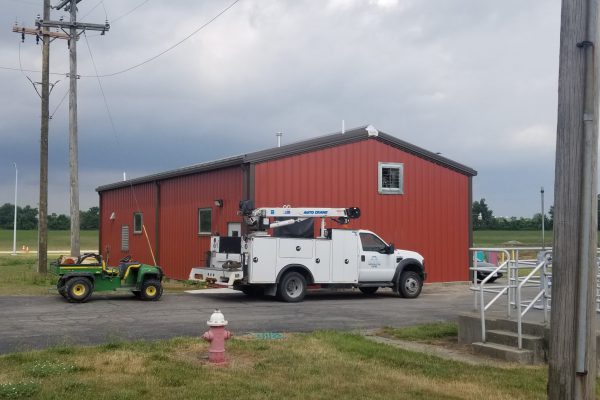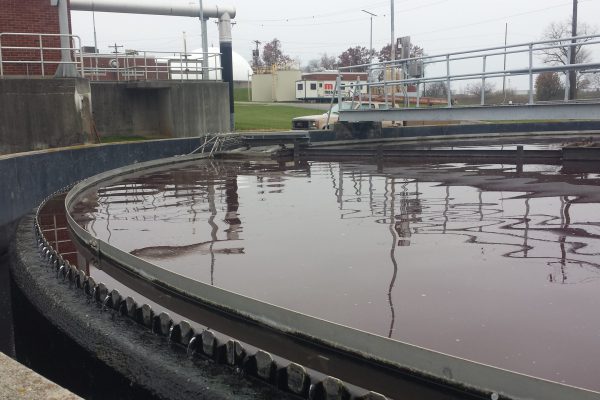The City of Defiance, Ohio wanted to replace their existing plant effluent chlorine disinfection system with an ultraviolet disinfection system at their Water Pollution Control Facility (WPC). The design of the system needed to meet current and future design flows, as well as provide acceptable treatment during unique operating conditions. The City authorized Jones & Henry to proceed with equipment evaluation and design of their new UV disinfection system in 2018.
The WPC facility was originally constructed in 1956. The addition of chlorine gas disinfection was added to the plant processes during a 1969 improvement project. In a 1989 project, the west chlorine contact tank was expanded and sulfur dioxide dechlorination was added. This brought the disinfection capacity of the WPC facility to greater than 16 mgd.
Due to safety hazards associated with the operation and maintenance of a chlorine gas disinfection system, as well as sulfur dioxide dechlorination, the City was interested in pursuing the applicability of ultraviolet disinfection (UV).
During wet weather flows the secondary capacity limits flow through the plant. To disinfect as much of the wet weather flows as possible and to limit number or volume of CSO events, the WPC facility has the ability to bypass a portion of the settled sewage flows around secondary treatment. The treated secondary and the bypassed flows combine and are disinfected prior to release to the receiving stream.
The bypassing of settled sewage flows, as well as dye events from an industrial user, lowers the ultraviolet transmittance (UVT) of the water to be disinfected to as low as 36%. This is much lower than typical municipal treatment plants where UV systems are designed to a UVT of 65%.
To test the applicability of UV disinfection of the WPC plant effluent, a pilot test was completed from May through October 2017. The testing showed that UV was able to provide the required disinfection, even with a UVT as low as 36%.
Equipment selection and Preliminary Design were completed from December 2018 to April 2019. During this time, four UV equipment manufacturers were evaluated to address the City’s concern with reliability; ease of maintenance; and disinfection, especially when UVT was low. The final selection made by the City was the Enaqua UV system. The system is composed of two reactors with three banks each and 156 lamps per bank, for a total of 936 lamps. An equivalent system treating water with a UVT of 65.0% could treat approximately 52 mgd.
The WPC current average day flow is 3.2 mgd, average daily design flow is 6.0 mgd and the peak hourly flow rate for disinfection is 15.0 mgd.
The project Design was completed between April and July 2019. The west chlorine contact tank was to be modified to accommodate the new equipment. The design included removal of the existing tank baffle walls, scum trough and effluent weirs; raising the bottom of the tank and cast in place concrete flow channels; slide gates for wet flow control and maintenance; coordination with the UV manufacturer on equipment placement and delivery deadlines; expansion of the tank footprint for electrical equipment; pre-engineered metal building to enclose the UV system and electrical equipment; modifications to the medium voltage power to accommodate the new work; associated building electrical; controls and incorporation of the new system into the existing plant SCADA; OEPA PTI and building permit submissions.
Construction began in November 2019 and preceded through early 2020. Challenges during construction included winter protections during cold weather concrete placement; coordination with the plant for the power outage of a primary plant influent lift station to install a new transformer; delays in travel due to the global events of 2020; expediting submittals to meet delivery deadlines, scheduling of equipment delivery and installation to meet the demands of the project schedule.
The project was substantially completed on June 4, 2020 and utilized for the 2020 disinfection season.




